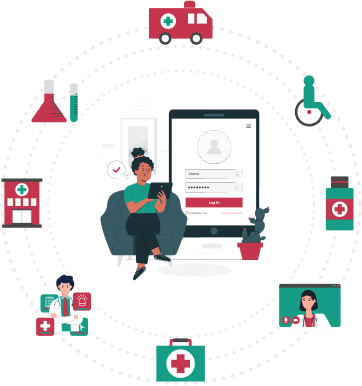In the event of a heart attack, swift and efficient emergency response is crucial to improve the patient's chances of survival and minimize long-term damage. The ambulance, a cornerstone of modern healthcare, plays a pivotal role in such life-threatening situations. This blog explores the various roles of an ambulance during a heart attack emergency, shedding light on the vital tasks performed by emergency medical personnel to save lives and ensure timely and appropriate medical assistance.
Rapid Response and Early Intervention
When a heart attack strikes, time becomes the most critical factor in determining the patient's outcome. Ambulances are equipped with advanced communication systems that allow them to receive and respond to emergency calls rapidly. These vehicles are strategically stationed throughout urban and rural areas to ensure a quick response time. Upon reaching the scene, skilled emergency medical personnel evaluate the patient's condition and begin early intervention measures. They assess vital signs, administer oxygen therapy and provide pain relief medications to stabilize the patient. Early intervention is crucial as it can prevent the heart attack from worsening and reduce the risk of complications.
Immediate Medical Assistance en route to the Hospital
The ambulance serves as a mobile medical unit, providing essential medical care while transporting the patient to the hospital. Ambulance personnel are trained to administer life-saving interventions during transit. They monitor the patient's vital signs, perform electrocardiograms (ECGs) and initiate cardiac monitoring to detect any changes in heart rhythm promptly. In cases of severe heart attacks, ambulances are equipped with defibrillators, which can deliver electric shocks to restore a normal heart rhythm in cases of cardiac arrest. These defibrillators can make a crucial difference in the patient's survival chances if used promptly. Additionally, ambulances are equipped with a wide array of emergency medical equipment and medications that enable personnel to address various medical emergencies and stabilize patients effectively before they reach the hospital.
Communication with the Hospital
Ambulances are connected to the hospital's emergency department, enabling constant communication with healthcare professionals. Through ambulance services for hospitals, ambulance personnel can relay crucial information about the patient's condition, ECG readings, and medical history to the hospital. This real-time communication allows the hospital to prepare for the patient's arrival and mobilize the necessary medical resources.
Facilitating a Smooth Handover at the Hospital
When the ambulance arrives at the hospital, the emergency medical personnel coordinate a seamless handover with the hospital staff. They provide detailed information about the patient's condition, the interventions performed during transit and any changes in the patient's vital signs. This handover ensures that the hospital team is well-informed and can take immediate action upon the patient's arrival. The efficient transfer of information between ambulance personnel and hospital staff is essential for providing continuous and effective care.
Post-Heart Attack Care
Ambulance services do not merely end with delivering the patient to the hospital. They play a role in the post-heart attack phase as well. Once the patient is admitted to the hospital, the ambulance team updates the hospital staff about any changes in the patient's condition during transit. This information is crucial for the hospital team to devise an appropriate treatment plan tailored to the patient's needs.
Conclusion
In conclusion, the role of an ambulance in heart attack emergencies cannot be overstated. These life-saving vehicles serve as the first line of defense, providing rapid response, early intervention and immediate medical care en route to the hospital. Equipped with state-of-the-art equipment and staffed by skilled medical professionals, ambulances play a crucial role in stabilizing patients and ensuring they receive timely and appropriate medical attention. As we acknowledge the significance of ambulances in heart attack emergencies, we must also emphasize the importance of public awareness about heart attack symptoms and the necessity of calling emergency services promptly. Timely action can make a life-saving difference and increase the likelihood of a successful recovery. Together, as a society, we can continue to support and appreciate the indispensable role of ambulances in saving lives during heart attack emergencies.






